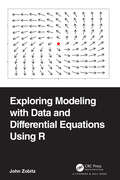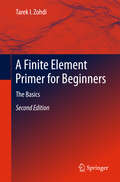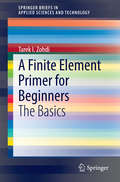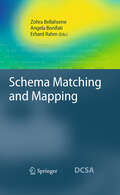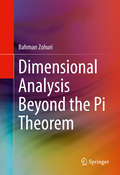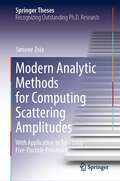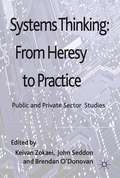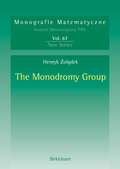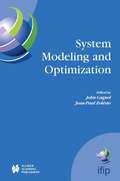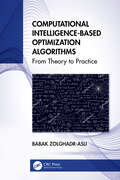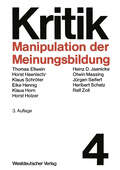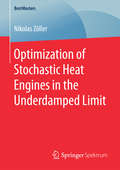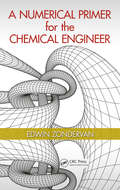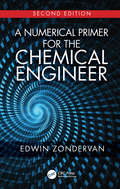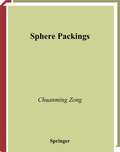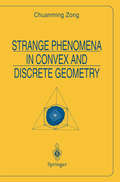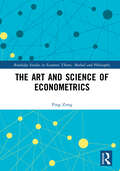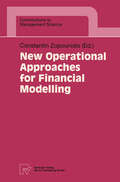- Table View
- List View
Exploring Modeling with Data and Differential Equations Using R
by John ZobitzExploring Modeling with Data and Differential Equations Using R provides a unique introduction to differential equations with applications to the biological and other natural sciences. Additionally, model parameterization and simulation of stochastic differential equations are explored, providing additional tools for model analysis and evaluation. This unified framework sits "at the intersection" of different mathematical subject areas, data science, statistics, and the natural sciences. The text throughout emphasizes data science workflows using the R statistical software program and the tidyverse constellation of packages. Only knowledge of calculus is needed; the text’s integrated framework is a stepping stone for further advanced study in mathematics or as a comprehensive introduction to modeling for quantitative natural scientists. The text will introduce you to: modeling with systems of differential equations and developing analytical, computational, and visual solution techniques. the R programming language, the tidyverse syntax, and developing data science workflows. qualitative techniques to analyze a system of differential equations. data assimilation techniques (simple linear regression, likelihood or cost functions, and Markov Chain, Monte Carlo Parameter Estimation) to parameterize models from data. simulating and evaluating outputs for stochastic differential equation models. An associated R package provides a framework for computation and visualization of results. It can be found here: https://cran.r-project.org/web/packages/demodelr/index.html.
Exploring Modeling with Data and Differential Equations Using R
by John ZobitzExploring Modeling with Data and Differential Equations Using R provides a unique introduction to differential equations with applications to the biological and other natural sciences. Additionally, model parameterization and simulation of stochastic differential equations are explored, providing additional tools for model analysis and evaluation. This unified framework sits "at the intersection" of different mathematical subject areas, data science, statistics, and the natural sciences. The text throughout emphasizes data science workflows using the R statistical software program and the tidyverse constellation of packages. Only knowledge of calculus is needed; the text’s integrated framework is a stepping stone for further advanced study in mathematics or as a comprehensive introduction to modeling for quantitative natural scientists. The text will introduce you to: modeling with systems of differential equations and developing analytical, computational, and visual solution techniques. the R programming language, the tidyverse syntax, and developing data science workflows. qualitative techniques to analyze a system of differential equations. data assimilation techniques (simple linear regression, likelihood or cost functions, and Markov Chain, Monte Carlo Parameter Estimation) to parameterize models from data. simulating and evaluating outputs for stochastic differential equation models. An associated R package provides a framework for computation and visualization of results. It can be found here: https://cran.r-project.org/web/packages/demodelr/index.html.
A Finite Element Primer for Beginners: The Basics (SpringerBriefs in Applied Sciences and Technology)
by Tarek I. ZohdiThe purpose of this primer is to provide the basics of the Finite Element Method, primarily illustrated through a classical model problem, linearized elasticity. The topics covered are: • Weighted residual methods and Galerkin approximations,• A model problem for one-dimensional linear elastostatics,• Weak formulations in one dimension,• Minimum principles in one dimension,• Error estimation in one dimension,• Construction of Finite Element basis functions in one dimension,• Gaussian Quadrature,• Iterative solvers and element by element data structures,• A model problem for three-dimensional linear elastostatics,• Weak formulations in three dimensions,• Basic rules for element construction in three-dimensions,• Assembly of the system and solution schemes,• An introduction to time-dependent problems and• An introduction to rapid computation based on domain decomposition and basic parallel processing. The approach is to introduce the basic concepts first in one-dimension, then move on to three-dimensions. A relatively informal style is adopted. This primer is intended to be a “starting point”, which can be later augmented by the large array of rigorous, detailed, books in the area of Finite Element analysis. In addition to overall improvements to the first edition, this second edition also adds several carefully selected in-class exam problems from exams given over the last 15 years at UC Berkeley, as well as a large number of take-home computer projects. These problems and projects are designed to be aligned to the theory provided in the main text of this primer.
A Finite Element Primer for Beginners: The Basics (SpringerBriefs in Applied Sciences and Technology)
by Tarek I. ZohdiThe purpose of this primer is to provide the basics of the Finite Element Method, primarily illustrated through a classical model problem, linearized elasticity. The topics covered are:(1) Weighted residual methods and Galerkin approximations,(2) A model problem for one-dimensional linear elastostatics,(3) Weak formulations in one dimension,(4) Minimum principles in one dimension,(5) Error estimation in one dimension,(5) Construction of Finite Element basis functions in one dimension,(6) Gaussian Quadrature,(7) Iterative solvers and element by element data structures,(8) A model problem for three-dimensional linear elastostatics,(9) Weak formulations in three dimensions,(10) Basic rules for element construction in three-dimensions,(11) Assembly of the system and solution schemes,(12) Assembly of the system and solution schemes,(13) An introduction to time-dependent problems and(14) A brief introduction to rapid computation based on domain decomposition and basic parallel processing.
Schema Matching and Mapping (Data-Centric Systems and Applications)
by Zohra Bellahsene, Angela Bonifati and Erhard RahmRequiring heterogeneous information systems to cooperate and communicate has now become crucial, especially in application areas like e-business, Web-based mash-ups and the life sciences. Such cooperating systems have to automatically and efficiently match, exchange, transform and integrate large data sets from different sources and of different structure in order to enable seamless data exchange and transformation. The book edited by Bellahsene, Bonifati and Rahm provides an overview of the ways in which the schema and ontology matching and mapping tools have addressed the above requirements and points to the open technical challenges. The contributions from leading experts are structured into three parts: large-scale and knowledge-driven schema matching, quality-driven schema mapping and evolution, and evaluation and tuning of matching tasks. The authors describe the state of the art by discussing the latest achievements such as more effective methods for matching data, mapping transformation verification, adaptation to the context and size of the matching and mapping tasks, mapping-driven schema evolution and merging, and mapping evaluation and tuning. The overall result is a coherent, comprehensive picture of the field.With this book, the editors introduce graduate students and advanced professionals to this exciting field. For researchers, they provide an up-to-date source of reference about schema and ontology matching, schema and ontology evolution, and schema merging.
Dimensional Analysis Beyond the Pi Theorem
by Bahman ZohuriDimensional Analysis and Physical Similarity are well understood subjects, and the general concepts of dynamical similarity are explained in this book. Our exposition is essentially different from those available in the literature, although it follows the general ideas known as Pi Theorem. There are many excellent books that one can refer to; however, dimensional analysis goes beyond Pi theorem, which is also known as Buckingham’s Pi Theorem. Many techniques via self-similar solutions can bound solutions to problems that seem intractable.A time-developing phenomenon is called self-similar if the spatial distributions of its properties at different points in time can be obtained from one another by a similarity transformation, and identifying one of the independent variables as time. However, this is where Dimensional Analysis goes beyond Pi Theorem into self-similarity, which has represented progress for researchers.In recent years there has been a surge of interest in self-similar solutions of the First and Second kind. Such solutions are not newly discovered; they have been identified and named by Zel’dovich, a famous Russian Mathematician in 1956. They have been used in the context of a variety of problems, such as shock waves in gas dynamics, and filtration through elasto-plastic materials.Self-Similarity has simplified computations and the representation of the properties of phenomena under investigation. It handles experimental data, reduces what would be a random cloud of empirical points to lie on a single curve or surface, and constructs procedures that are self-similar. Variables can be specifically chosen for the calculations.
Thermal-Hydraulic Analysis of Nuclear Reactors
by Bahman ZohuriThis revised text covers the fundamentals of thermodynamics required to understand electrical power generation systems and the application of these principles to nuclear reactor power plant systems. The book begins with fundamental definitions of units and dimensions, thermodynamic variables and the Laws of Thermodynamics progressing to sections on specific applications of the Brayton and Rankine cycles for power generation and projected reactor systems design issues. It is not a traditional general thermodynamics text, per se, but a practical thermodynamics volume intended to explain the fundamentals and apply them to the challenges facing actual nuclear power plants systems, where thermal hydraulics comes to play. There have been significant new findings for intercooled systems since the previous edition published and they will be included in this volume. New technology plans for using a Nuclear Air-Brayton as a storage system for a low carbon grid are presented along with updated component sizes and performance criteria for Small Modular Reactors.Written in a lucid, straight-forward style while retaining scientific rigor, the content is accessible to upper division undergraduate students and aimed at practicing engineers in nuclear power facilities and engineering scientists and technicians in industry, academic research groups, and national laboratories. The book is also a valuable resource for students and faculty in various engineering programs concerned with nuclear reactors.
Thermal-Hydraulic Analysis of Nuclear Reactors
by Bahman Zohuri Nima FathiThis text covers the fundamentals of thermodynamics required to understand electrical power generation systems and the application of these principles to nuclear reactor power plant systems. It is not a traditional general thermodynamics text, per se, but a practical thermodynamics volume intended to explain the fundamentals and apply them to the challenges facing actual nuclear power plants systems, where thermal hydraulics comes to play. Written in a lucid, straight-forward style while retaining scientific rigor, the content is accessible to upper division undergraduate students and aimed at practicing engineers in nuclear power facilities and engineering scientists and technicians in industry, academic research groups, and national laboratories. The book is also a valuable resource for students and faculty in various engineering programs concerned with nuclear reactors.This book also:Provides extensive coverage of thermal hydraulics with thermodynamics in nuclear reactors, beginning with fundamental definitions of units and dimensions, thermodynamic variables, and the Laws of Thermodynamics progressing to sections on specific applications of the Brayton and Rankine cycles for power generation and projected reactor systems design issuesReinforces fundamentals of fluid dynamics and heat transfer; thermal and hydraulic analysis of nuclear reactors, two-phase flow and boiling, compressible flow, stress analysis, and energy conversion methodsIncludes detailed appendices that cover metric and English system units and conversions, detailed steam and gas tables, heat transfer properties, and nuclear reactor system descriptions
Modern Analytic Methods for Computing Scattering Amplitudes: With Application to Two-Loop Five-Particle Processes (Springer Theses)
by Simone ZoiaThis work presents some essential techniques that constitute the modern strategy for computing scattering amplitudes. It begins with an introductory chapter to fill the gap between a standard QFT course and the latest developments in the field. The author then tackles the main bottleneck: the computation of the loop Feynman integrals. The most efficient technique for their computation is the method of the differential equations. This is discussed in detail, with a particular focus on the mathematical aspects involved in the derivation of the differential equations and their solution. Ample space is devoted to the special functions arising from the differential equations, to their analytic properties, and to the mathematical techniques which allow us to handle them systematically. The thesis also addresses the application of these techniques to a cutting-edge problem of importance for the physics programme of the Large Hadron Collider: five-particle amplitudes at two-loop order. It presents the first analytic results for complete two-loop five-particle amplitudes, in supersymmetric theories and QCD. The techniques discussed here open the door to precision phenomenology for processes of phenomenological interest, such as three-photon, three-jet, and di-photon + jet production.
Systems Thinking: Public and Private Sector Studies
by Keivan Zokaei John Seddon Brendan O'DonovanSystems Thinking is a topic which is at the forefront of how we think about management in the Public Sector and Service Industries. This collection from leading thinkers in the field takes a case study approach to a variety of issues which encompass topics such as Banking, Electrical Distribution, Manufacturing and Adult Social Care.
The Monodromy Group (Monografie Matematyczne #67)
by Henryk ZoladekIn singularity theory and algebraic geometry, the monodromy group is embodied in the Picard-Lefschetz formula and the Picard-Fuchs equations. It has applications in the weakened 16th Hilbert problem and in mixed Hodge structures. There is a deep connection of monodromy theory with Galois theory of differential equations and algebraic functions. In covering these and other topics, this book underlines the unifying role of the monogropy group.
System Modeling and Optimization: Proceedings of the 21st IFIP TC7 Conference held in July 21st - 25th, 2003, Sophia Antipolis, France (IFIP Advances in Information and Communication Technology #166)
by Jean-Paul Zolesio John CagnolSystem Modeling and Optimization is an indispensable reference for anyone interested in the recent advances in these two disciplines. The book collects, for the first time, selected articles from the 21st and most recent IFIP TC 7 conference in Sophia Antipolis, France. Applied mathematicians and computer scientists can attest to the ever-growing influence of these two subjects. The practical applications of system modeling and optimization can be seen in a number of fields: environmental science, transport and telecommunications, image analysis, free boundary problems, bioscience, and non-cylindrical evolution control, to name just a few. New developments in each of these fields have contributed to a more complex understanding of both system modeling and optimization. Editors John Cagnol and Jean-Paul Zolésio, chairs of the conference, have assembled System Modeling and Optimization to present the most up-to-date developments to professionals and academics alike.
Computational Intelligence-based Optimization Algorithms: From Theory to Practice
by Babak Zolghadr-AsliComputational intelligence-based optimization methods, also known as metaheuristic optimization algorithms, are a popular topic in mathematical programming. These methods have bridged the gap between various approaches and created a new school of thought to solve real-world optimization problems. In this book, we have selected some of the most effective and renowned algorithms in the literature. These algorithms are not only practical but also provide thought-provoking theoretical ideas to help readers understand how they solve optimization problems. Each chapter includes a brief review of the algorithm’s background and the fields it has been used in. Additionally, Python code is provided for all algorithms at the end of each chapter, making this book a valuable resource for beginner and intermediate programmers looking to understand these algorithms.
Computational Intelligence-based Optimization Algorithms: From Theory to Practice
by Babak Zolghadr-AsliComputational intelligence-based optimization methods, also known as metaheuristic optimization algorithms, are a popular topic in mathematical programming. These methods have bridged the gap between various approaches and created a new school of thought to solve real-world optimization problems. In this book, we have selected some of the most effective and renowned algorithms in the literature. These algorithms are not only practical but also provide thought-provoking theoretical ideas to help readers understand how they solve optimization problems. Each chapter includes a brief review of the algorithm’s background and the fields it has been used in. Additionally, Python code is provided for all algorithms at the end of each chapter, making this book a valuable resource for beginner and intermediate programmers looking to understand these algorithms.
Optimization of Stochastic Heat Engines in the Underdamped Limit (BestMasters)
by Nikolas ZöllerNikolas Zöller examines the working principles and the underlying theoretical foundations of a microscopic heat engine. In particular, he investigates the system’s stochastic dynamics in the underdamped regime which has hardly been studied in the past, but will be experimentally feasible in the near future due to recent technological developments. Emphasis is put on the maximization of the engine’s efficiency at maximum power through optimization of the driving protocol. In addition, possible experimental realizations of a microscopic heat engine are discussed.
Längenkonzepte von Kindern im Elementarbereich
by Johanna ZöllnerDer alltägliche Umgang mit Längen spielt für Kinder im Elementarbereich eine bedeutende Rolle und birgt reiches mathematisches Förderpotenzial. Dennoch stehen Längen selten im Fokus der frühen mathematischen Bildung. Johanna Zöllner entwickelt auf theoretischer und empirischer Basis ein Modell, das Längenkonzepte als komplexes Zusammenspiel vielfältiger Komponenten beschreibt, die im mentalen sowie im handelnden Umgang mit Längen zum Tragen kommen. Ein umfassendes Verständnis dieser Komponenten ist grundlegend für eine adäquate Unterstützung der Kinder beim Aufbau von Längenkonzepten. Die Studie bietet wertvolle Erkenntnisse für die Gestaltung von Lehr- und Lernumgebungen, zudem eröffnen detaillierte Auswertungskategorien Diagnosemöglichkeiten und bilden eine Basis für die weitere wissenschaftliche Auseinandersetzung mit Größenkonzepten.
A Numerical Primer for the Chemical Engineer
by Edwin ZondervanSolve Developed Models in a Numerical FashionDesigned as an introduction to numerical methods for students, A Numerical Primer for the Chemical Engineer explores the role of models in chemical engineering. Combining mathematical correctness (model verification) with numerical performance (model validation), this text concentrates on numerical metho
A Numerical Primer for the Chemical Engineer, Second Edition
by Edwin ZondervanDesigned as an introduction to numerical methods for students, this book combines mathematical correctness with numerical performance, and concentrates on numerical methods and problem solving. It applies actual numerical solution strategies to formulated process models to help identify and solve chemical engineering problems. Second edition comes with additional chapter on numerical integration and section on boundary value problems in the relevant chapter. Additional material on general modelling principles, mass/energy balances and separate section on DAE’s is also included. Case study section has been extended with additional examples.
A Numerical Primer for the Chemical Engineer, Second Edition
by Edwin ZondervanDesigned as an introduction to numerical methods for students, this book combines mathematical correctness with numerical performance, and concentrates on numerical methods and problem solving. It applies actual numerical solution strategies to formulated process models to help identify and solve chemical engineering problems. Second edition comes with additional chapter on numerical integration and section on boundary value problems in the relevant chapter. Additional material on general modelling principles, mass/energy balances and separate section on DAE’s is also included. Case study section has been extended with additional examples.
Sphere Packings (Universitext)
by Chuanming ZongSphere packings is one of the most fascinating and challenging subjects in mathematics. In the course of centuries, many exciting results have been obtained, ingenious methods created, related challenging problems proposed, and many surprising connections with other subjects found. This book gives a full account of this fascinating subject, especially its local aspects, discrete aspects, and its proof methods. The book includes both classical and contemporary results and provides a full treatment of the subject.
Strange Phenomena in Convex and Discrete Geometry (Universitext)
by Chuanming ZongConvex and discrete geometry is one of the most intuitive subjects in mathematics. One can explain many of its problems, even the most difficult - such as the sphere-packing problem (what is the densest possible arrangement of spheres in an n-dimensional space?) and the Borsuk problem (is it possible to partition any bounded set in an n-dimensional space into n+1 subsets, each of which is strictly smaller in "extent" than the full set?) - in terms that a layman can understand; and one can reasonably make conjectures about their solutions with little training in mathematics.
The Art and Science of Econometrics (Routledge Studies in Economic Theory, Method and Philosophy)
by Ping ZongToday econometrics has been widely applied in the empirical study of economics. As an empirical science, econometrics uses rigorous mathematical and statistical methods for economic problems. Understanding the methodologies of both econometrics and statistics is a crucial departure for econometrics. The primary focus of this book is to provide an understanding of statistical properties behind econometric methods. Following the introduction in Chapter 1, Chapter 2 provides the methodological review of both econometrics and statistics in different periods since the 1930s. Chapters 3 and 4 explain the underlying theoretical methodologies for estimated equations in the simple regression and multiple regression models and discuss the debates about p-values in particular. This part of the book offers the reader a richer understanding of the methods of statistics behind the methodology of econometrics. Chapters 5–9 of the book are focused on the discussion of regression models using time series data, traditional causal econometric models, and the latest statistical techniques. By concentrating on dynamic structural linear models like state-space models and the Bayesian approach, the book alludes to the fact that this methodological study is not only a science but also an art. This work serves as a handy reference book for anyone interested in econometrics, particularly in relevance to students and academic and business researchers in all quantitative analysis fields.
The Art and Science of Econometrics (Routledge Studies in Economic Theory, Method and Philosophy)
by Ping ZongToday econometrics has been widely applied in the empirical study of economics. As an empirical science, econometrics uses rigorous mathematical and statistical methods for economic problems. Understanding the methodologies of both econometrics and statistics is a crucial departure for econometrics. The primary focus of this book is to provide an understanding of statistical properties behind econometric methods. Following the introduction in Chapter 1, Chapter 2 provides the methodological review of both econometrics and statistics in different periods since the 1930s. Chapters 3 and 4 explain the underlying theoretical methodologies for estimated equations in the simple regression and multiple regression models and discuss the debates about p-values in particular. This part of the book offers the reader a richer understanding of the methods of statistics behind the methodology of econometrics. Chapters 5–9 of the book are focused on the discussion of regression models using time series data, traditional causal econometric models, and the latest statistical techniques. By concentrating on dynamic structural linear models like state-space models and the Bayesian approach, the book alludes to the fact that this methodological study is not only a science but also an art. This work serves as a handy reference book for anyone interested in econometrics, particularly in relevance to students and academic and business researchers in all quantitative analysis fields.
New Operational Approaches for Financial Modelling (Contributions to Management Science)
by Constantin Zopounidisth This book is devoted to the 19 Meeting of the EURO Working Group on Financial Modelling, held in Chania, Crete, Greece,November28-30, 1996. The EURO Working Group on Financial Modelling was founded in September 1986 in Lisbon. The primary field of interest for the Working Group can be described as "the development of financial models that help to solve problems facedby financial managers in the firm". From this point of view, the following objectivesof the Working Group are distinguished: • providing an international forum for exchange of information and experience on financial modelling; • encouraging research in financial modelling (i. e. new techniques, methodologies, software,empirical studies,etc. ); • stimulating and strengthening the interaction between financial economic theory and the practice of financial decision making; • cooperating and exchanging information with universities and financial institutions throughout Europe. According to the aboveobjectives,the basic aim of this book is to present some new operational approaches (i. e. neural nets, multicriteria analysis, new optimization algorithms, decision software, etc. ) for financial modelling, both in a theoretical and practical levels. Thus, the present volume is divided in nine chapters. The first chapter refers to the new trends in financial modelling and includes two invited papers by Gil-Aluja and Pardalos. The second chapter involves papers on the topic of high performance computing and finance which is a European union project in which participate some members of the EURO Working Group on Financial Modelling (Spronk, Zenios, Dempster, etc. ).
